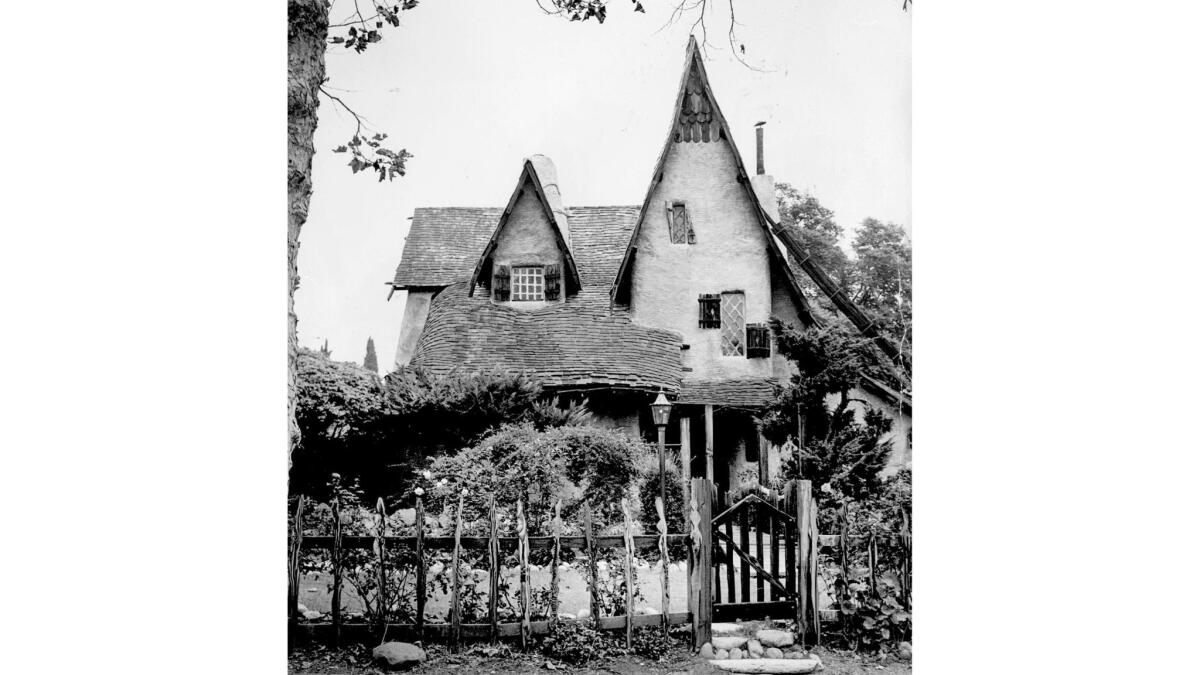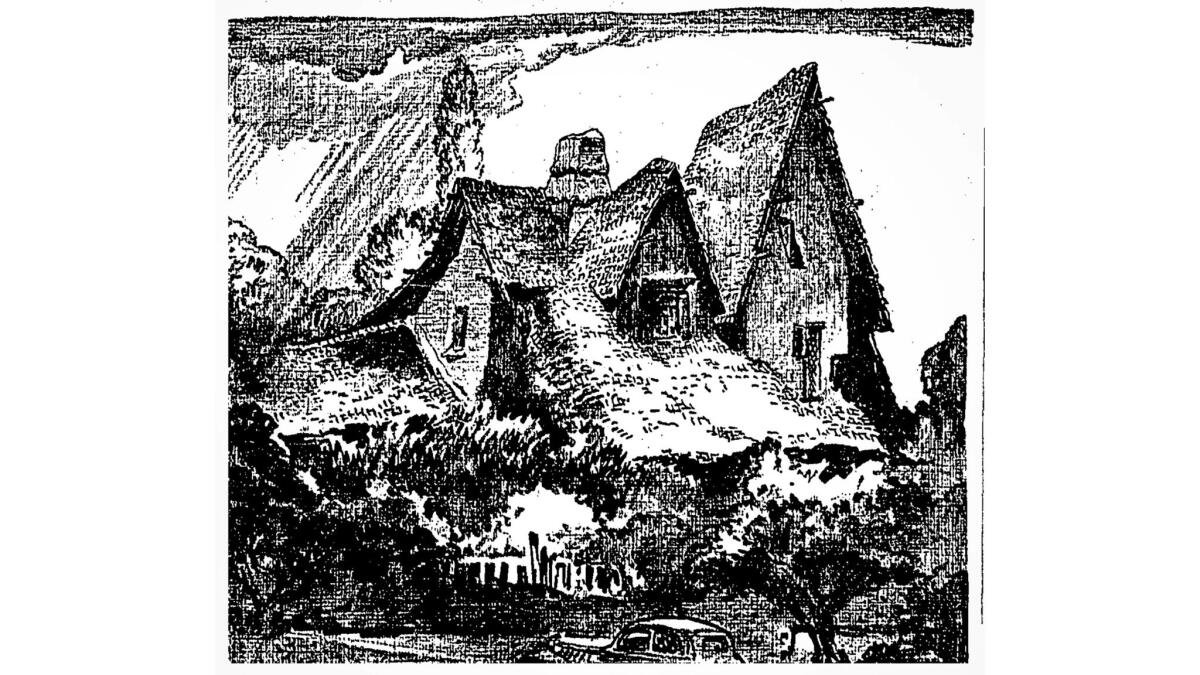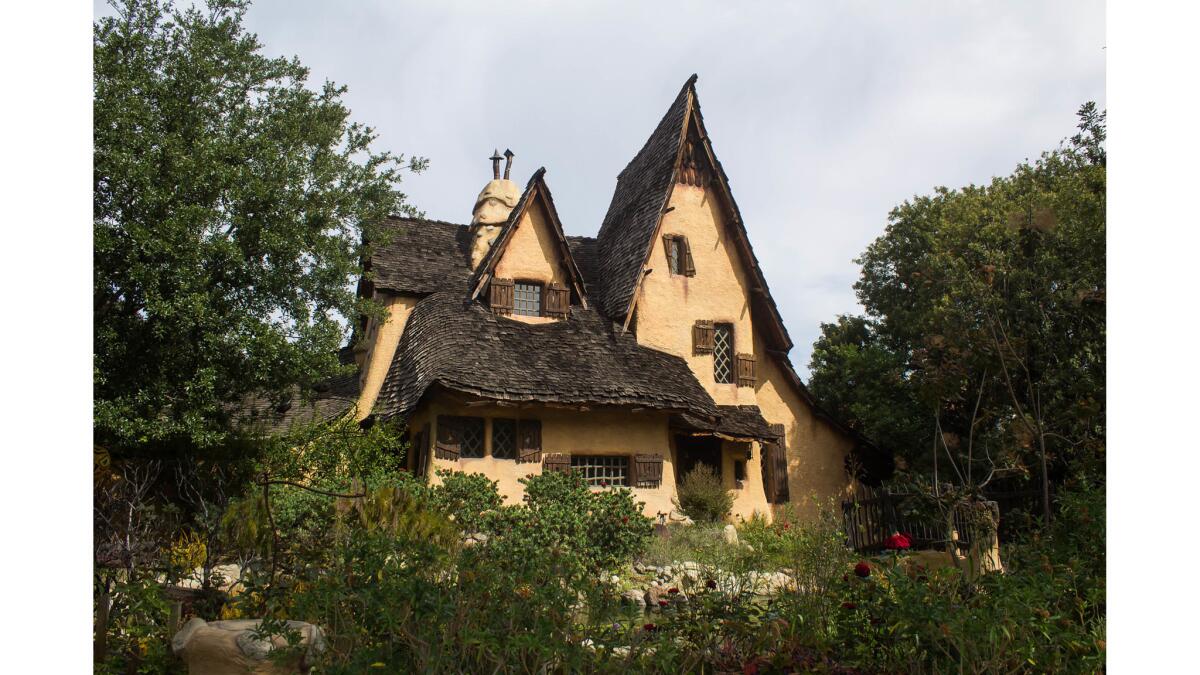From the Archives: The Witch’s House

Built in 1921 at a Culver City film studio, the Witch’s House was moved to its current location in 1934.
In an Aug. 30, 2006, article, staff writer Thomas Curwen reported:
This witch’s lair of fairy-tale proportions, concocted in 1921 from a brew straight out of the Brothers Grimm, may be a cliche by now, yet it still dares to say what is often kept quiet.
With its raked plaster and river rock, aversion to straight lines, a shingle roof with ski-slope severity, mullioned windows and off-kilter shutters, it is the “Rocky Horror” of domestic architecture, “Gods and Monsters” come home to roost. Designed by Harry Oliver in 1921 as a movie set, it became an office, and then a home, and it’s what real estate is all about -- fantasy. …

By 1938, the Witch’s House entered Hollywood lore -- or tours, at least. In the Sept. 26, 1938, Los Angeles Times, Joe Seewerker and Charles Owens reported:
You’ve seen those rubberneck busses that haul people over Hollywood and Beverly Hills. The busses with leather-lunged persons on them who shout: “On your right, ladies and gentlemen, you see the home of Clark Gable–to the left, Garbo, the Swede–”
Well out here at 516 Walden avenue, Beverly Hills, lives a lively amiable lady, Mrs. Lilian Lascalle. Mrs. Lascalle could by no stretch of the imagination be called a violent woman. But it is to be feared that, if Mrs. Lascalle happened to find her slender hands around the windpipe of one the rubberneck bus persons, she would squeeze right heartily.
It is all because the beautiful home Mrs. Lascalle occupies at the Walden-avenue address. It is a home of French-Swiss architecture, a seventeenth century farm type, very intriguing and attractive to the eye.
The leather-lunged boys on the rubberneck busses have seized upon the intriguing appearance of the house to entertain their passengers. “On your right you see the famous witch house of Beverly Hills,” one of them brawled some years ago.
Ever since then he has been imitated by his fellow bus drivers until Mrs. Lascalle’s place actually has been given the reputation as a witch house. Postcards bearing pictures of it and describing it as a witch house have been sold to tourists.
It makes the ordinarily amiable Mrs. Lascalle so mad that she almost cries when she talks of it. “I don’t know what I can do about it,” she says. “But if I find anything I can do, I am going to do it. You wait and see.”

In the late 1990s, real estate agent Michael Libow purchased the home and renovated the property.
In a 2014 Los Angeles magazine article, Libow explained that Ward Lascelle purchased the structure and moved it to Beverly Hills. His wife, “Lillian divorced Ward, kept the house, and then married the house boy/guest/man servant, whose last name was Spadena.” Thus the home become known as the Spadena House.
This post was originally published on Oct. 22, 2015.
See more from the Los Angeles Times archives here
More to Read
The biggest entertainment stories
Get our big stories about Hollywood, film, television, music, arts, culture and more right in your inbox as soon as they publish.
You may occasionally receive promotional content from the Los Angeles Times.






